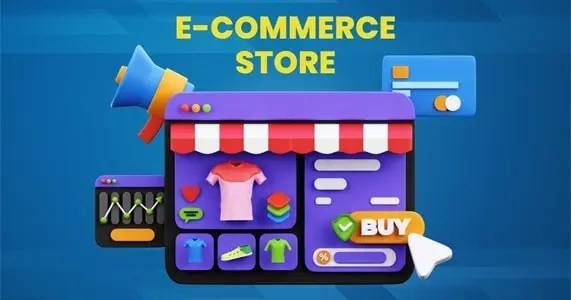E-commerce is increasingly dominating the retail landscape. In the second quarter of 2021, one out of every five retail dollars was spent with online retailers. Now is the perfect time to dive into the e-commerce world yourself.
This guide will provide you with the motivation and steps needed to start your e-commerce business, using a 30-60-90 day framework. The first month focuses on research and planning, the second on product creation, and the third on marketing and business operations.

Here’s everything you need to know to create an e-commerce brand:
First 30 Days: Research and Planning
Once you’ve decided to start online business ideas, begin with thorough research. Take time to understand the industry and carefully consider each aspect of your product. These five steps will guide you:
- Choose Your Product
- Whether you have a product idea or are starting from scratch, consider what products you love and know well. Reflect on your passions, unique talents, and interests. Ask yourself questions like:
- What products are essential to you?
- What unique talent or interest do you have?
- Is there a gap in the current e-commerce market that you can fill?
- Whether you have a product idea or are starting from scratch, consider what products you love and know well. Reflect on your passions, unique talents, and interests. Ask yourself questions like:
- Find a Niche
- Narrow down what makes your product special. Focus on a specific customer base or product quality. Your differentiator might be your unique vision. A specific niche helps simplify planning and researching, even if things evolve later on.
- Research Competition
- Investigate similar companies through a simple Google search. Analyze their e-commerce platforms, marketing strategies, and social media presence. Study major players like Amazon and Walmart to understand their pricing and presentation.
- Pick a Name
- Choose a creative name for your company. Consider your competitors’ names and why they work. A straightforward name can aid SEO and reduce confusion, but unique names like “Google” can also be highly successful. Create a list of potential names and check online to ensure availability and affordability.
- Select Your E-commerce Platform
- Selecting the right e-commerce platform is crucial. Dedicate time to researching customer reviews, case studies, and talking to other store owners. Determine your needs and ensure the platform can scale with your business. Consider the cost of various plans, including those for future growth.
Starting an e-commerce business involves careful planning and research. By following these initial steps, you’ll be well on your way to creating a successful online store.
Sales and Marketing Channels
Sales and marketing are ever-changing targets. As a young business, it’s wise to experiment with different strategies. Test various channels and creatives, then focus on what works and abandon what doesn’t.
Here are five common sales and marketing channels for e-commerce stores:
- SEO (Search Engine Optimization)
- SEO aims to drive potential customers to your website through organic search. The goal is to have your website recognized by search engines for relevant keywords. When customers search for a product you offer, you want your company to appear in the search results. Achieving a top Google ranking is challenging, and SEO has become a specialized industry, particularly popular with small businesses. Effective SEO can drive significant traffic with minimal cost.
- Paid Social Campaigns
- Paid social media campaigns enhance your social media content by showing it to a broader audience. You can target specific audiences, increasing the chances that your content reaches potential customers.
- Paid Advertising
- Paid advertising involves creating targeted content to attract new customers. This can range from traditional platforms like TV or print to digital platforms like Facebook or Google.
- Display Ads
- Display advertising uses digital platforms such as websites, apps, or social media to show pop-up ads for your business. You can create specific text, image, or video assets to promote your brand on websites frequented by your target audience.
- Partnerships
- Partnerships involve collaborating with relevant influencers or companies to promote both your business and theirs. This mutually beneficial tactic helps both parties reach new audiences.

